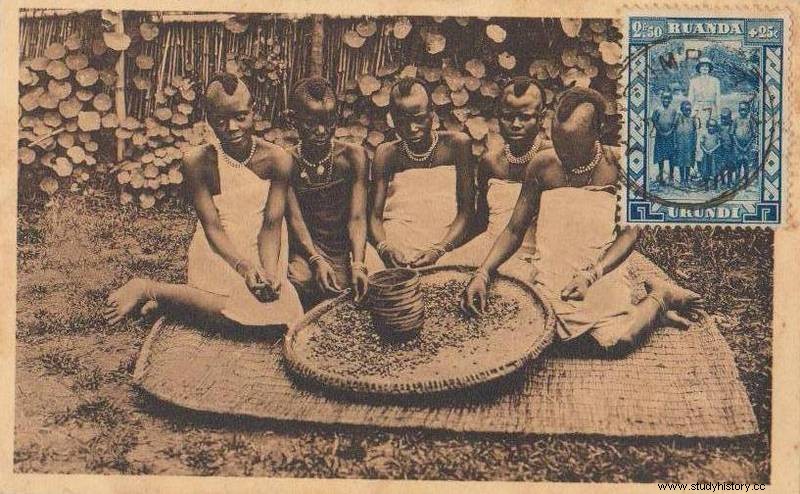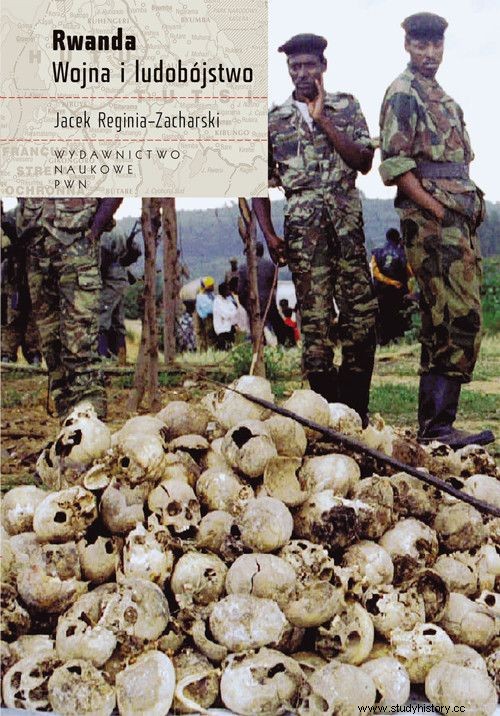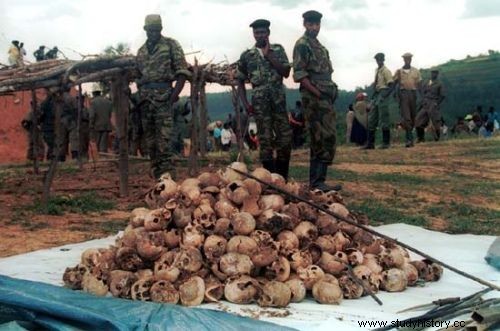The Belgians have mastered the ancient principle:"divide and rule". Unable to control their African colonies with the use of armed force, they decided to convince their subjects that they were divided into a race of masters and subhumans. The deliberate actions of Brussels years later led to one of the greatest genocides of the 20th century and the deaths of over a million people.
Rwanda is located in the middle of Africa - east of Congo, west of Tanzania. Far enough from both oceans to avoid the first wave of ruthless colonization. When Europeans occupied the African coast, an independent state grew in Rwanda similar to the feudal principalities of medieval Europe.
At the top of the social ladder stood the king ( Mwami ), below the aristocracy who hold office and land ( Tutsi ), and at the base the population is subject ( Hutu ) and a small caste of ministers ( Twa ). It was a social but not an ethnic division - the Tutsi and Hutu, just like the nobility and peasants of old Poland, had the same blood in their veins and used the same language.
Germany:exemplary colonialists?
The Germans found this organized system when they took over Rwanda with their colonial power at the end of the 19th century. De facto their sovereignty has always been purely nominal. They did not interfere in the internal affairs of the natives and did not undermine the authority of the authorities. Nor did they try to use to their advantage the animosities that necessarily occurred between the Tutsi and the Hutu - as always on the ruler-subject line.

A Belgian postcard from the 1930s showing the indigenous people of their African colonies. Brussels' policy in this area was the quintessence of the maxim divide and rule.
The Germans, however, did not stay long in Rwanda. Already in 1916, during World War I, the colonies were seized by the Belgians. They quickly began to bring order to it. Of course, it was easy to see that Rwandan society was strongly divided:80% of the population were Hutu, but power was exercised by Tutsis, of which only 20% were. The newcomers from Europe decided to use it as much as possible for their purposes.
Imaginary master race
Jacek Reginia-Zacharski, author of the book “Rwanda. War and genocide ”explains: Unable and unwilling to involve significant military forces, the Belgians tried to exercise power (...) by supporting some ethnic groups against another. They created a simple system of total dependence on the colony's authorities largely based on fear of potential retribution. (p. 33).
Admittedly, the Tutsis and Hutu were not de facto different ethnic groups, but the Belgians did not mind. After all, it was enough to convince the subjects that the differences between the two castes go deeper than you might imagine. The new rulers stood behind the ruling Tutsis of Rwanda - and in exchange for boundless allegiance, proclaimed them a race of masters.

A document from 1925 explained:The Tutsis are a separate race. They are not physically like Hutu, except, of course, the degraded [individuals] whose blood is no longer pure. On the other hand, the Tutsis, as a pure race, have nothing of the Negroes but color (p. 34).
A few years later it was specified: Tutsis are endowed with leadership qualities. They are characterized by a visible intelligence and even higher feelings - which is surprising in primitive peoples . ... [They make] the Tutsis naturally dominate the Hutu (p. 35) .
An explosion of hate
One hundred percent theory was put into practice. Only the Tutsis could hold office, only they became leaders, only they owned the land and could get rich. The Hutu landowners - quite a few of them before - were expropriated with the full support of Brussels. Moreover, the Tutsis had a complete monopoly on education. Even the rapidly growing local Catholic Church fully supported the racial division of society.
The culmination of this system of segregation - preceding apartheid and even racial laws in Nazi Germany - was the introduction by Belgians of special passports containing information about belonging to a Tutsi or Hutu. The latter entry closed the way to education, good work, property, any greater life prospects. And it was about the overwhelming majority of the population!

The tragic epilogue of the conflict between Hutu and Tutsi.
The Belgians quietly withdrew from their racial experiment after World War II - then it was no longer appropriate to sign up to a policy of hatred, which the Third Reich would not be ashamed of.
Rwanda's declaration of independence was accompanied by a bloody civil war that killed some 70,000 people. The conflict did not end in the following years. On the contrary, it exploded again in the early 1990s, leading to the greatest genocide since World War II.
Over a million people died in the dispute between Tutsi and Hutu. The victims were primarily the Tutsis:years ago raised by the Belgians to the role of masters, so that it would be easier to manage a far-away colony ...
Source:
- Jacek Reginia-Zacharski, Rwanda. War and genocide , Polish Scientific Publishers PWN, Warsaw 2012.
